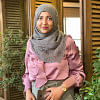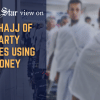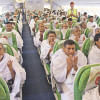Places to visit during your journey of Hajj

The Hajj pilgrimage to the holy city of Makkah is truly the journey of a lifetime, where the mind and soul go through a massive spiritual change and purification. While some locations holding immense religious and historic values have to be visited while performing Hajj, there are many more places to see within Makkah and Madinah where important religious events occurred during the former days of Islam.
While the intention of performing Hajj should be restricted to only the performing of Hajj, many times, pilgrims are intrigued by the fascinating history of Islam and would like to visit the places where the foundations of our religion were laid. This, however, should not be mixed with the intention of travelling mindlessly during the pilgrimage.
That being said, these are some of the holy sights you could visit while in Saudi Arabia, if permitted. For any Muslim who holds knowledge about the history of Islam, these are truly intriguing places to visit.
Masjid Al-Quba, Madinah
Masjid Al-Quba is one sacred site that holds immense religious value as it is the first mosque to ever be built in the history of Islam. History says that the first stones during the construction of the mosque were laid out by Prophet Muhammad (S) himself.
Performing prayers in this mosque is immensely rewarding as it is mentioned that whoever offers two rakats of voluntary prayers in this mosque will be rewarded equivalent to that of performing Umrah. The walls and entire perimeter of the mosque are etched with invaluable religious sentiments.
Masjid Al-Qiblatayn, Madinah
One of the most momentous incidents in Islam is the story about changing the direction of the qibla, and Masjid Al-Qiblatayn is the place where it was ordered to change the direction of the qibla from Baitul Maqdis in Jerusalem to the holy Ka'ba in Makkah. This significant event in history unified Muslims' direction of devotion to the Ka'ba.
The qibla is the ultimate sign of unity that coexists among all Muslims and the new direction would be set for eternity to come. During the time of change in direction, this also acted as a test upon Muslims to see who truly believes in the Prophet (S) and his statements. Thus, this site is of great historical and spiritual value.
Cave Hira in Jabal-E-Noor, Makkah
Jabal-e-Noor is a mountain in Makkah, inside which is the cave of Hira. This cave holds immense spiritual and religious importance as our beloved Prophet (S) received the first revelations of the Quran from Angel Jibril (AS) in this cave, which were the first five verses of Surah Al-Alaq, after spending a lot of time in solitude.
The mountain is thought to have been mentioned in Islamic texts over 30 times due to its religious significance. It is also known as the Mountain of Light and from a visual aspect, it seems as if two mountains are on top of each other and the top is a mountainous desert.
The Site of the Battle of Badr
The Battle of Badr was a major turning point in the spread of Islam, the victory of which led to the establishment of Muhammad (S) as one of the most powerful leaders in the Arabian Peninsula. It was amongst the very first battles to be fought by Prophet (S) where the Muslim force miraculously won although they were outnumbered by hundreds.
The historical relevance makes this site a must-visit place to travel where you can witness one of the major locations during the formation days of our religion with your own eyes. The site is located some kilometres away from Makkah. You can still find the wells there and the place remains mostly unchanged.
Jabal-E-Thawr
Our Prophet (S) and his companions had to go through a lot of hardship and challenges to establish Islam in its former days, which eventually led to the acceptance of the religion by the mass populace. Jabal-E-Thawr, which is located south of Makkah has a cave where our Prophet (S) and his companion Abu Bakr (RA) took shelter while migrating from Makkah to Madinah.
Reportedly, they spent three days here hiding from the Quraish tribe, and in order to protect the two men, Allah had a spider spin a web at the cave's entrance, preventing enemies from seeing through. Since then, the cave symbolises faith and hope.

 For all latest news, follow The Daily Star's Google News channel.
For all latest news, follow The Daily Star's Google News channel. 








Comments